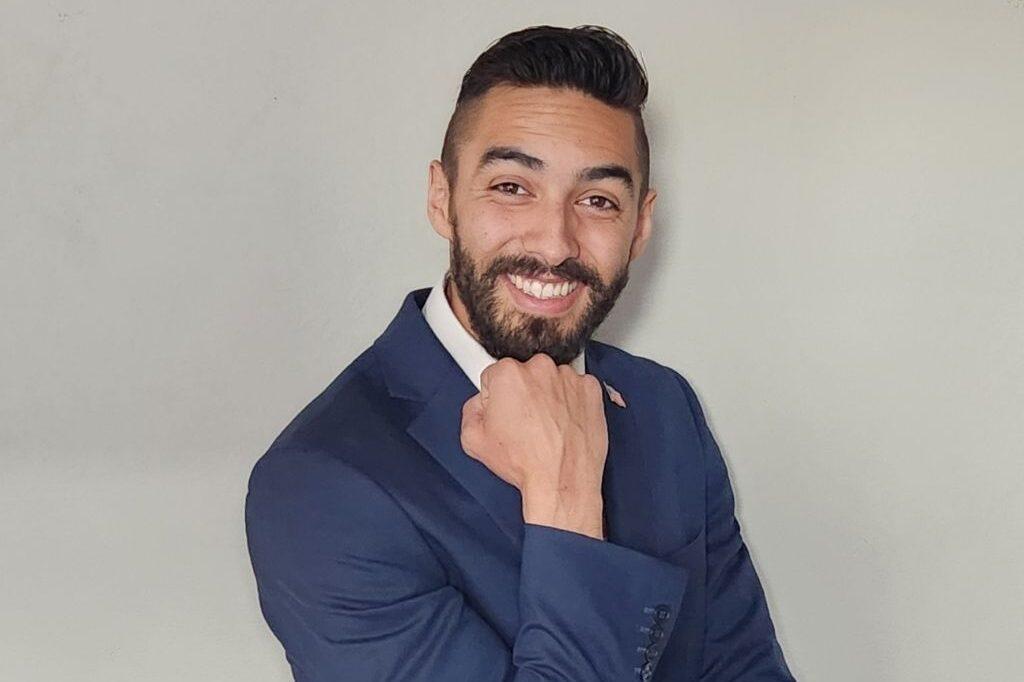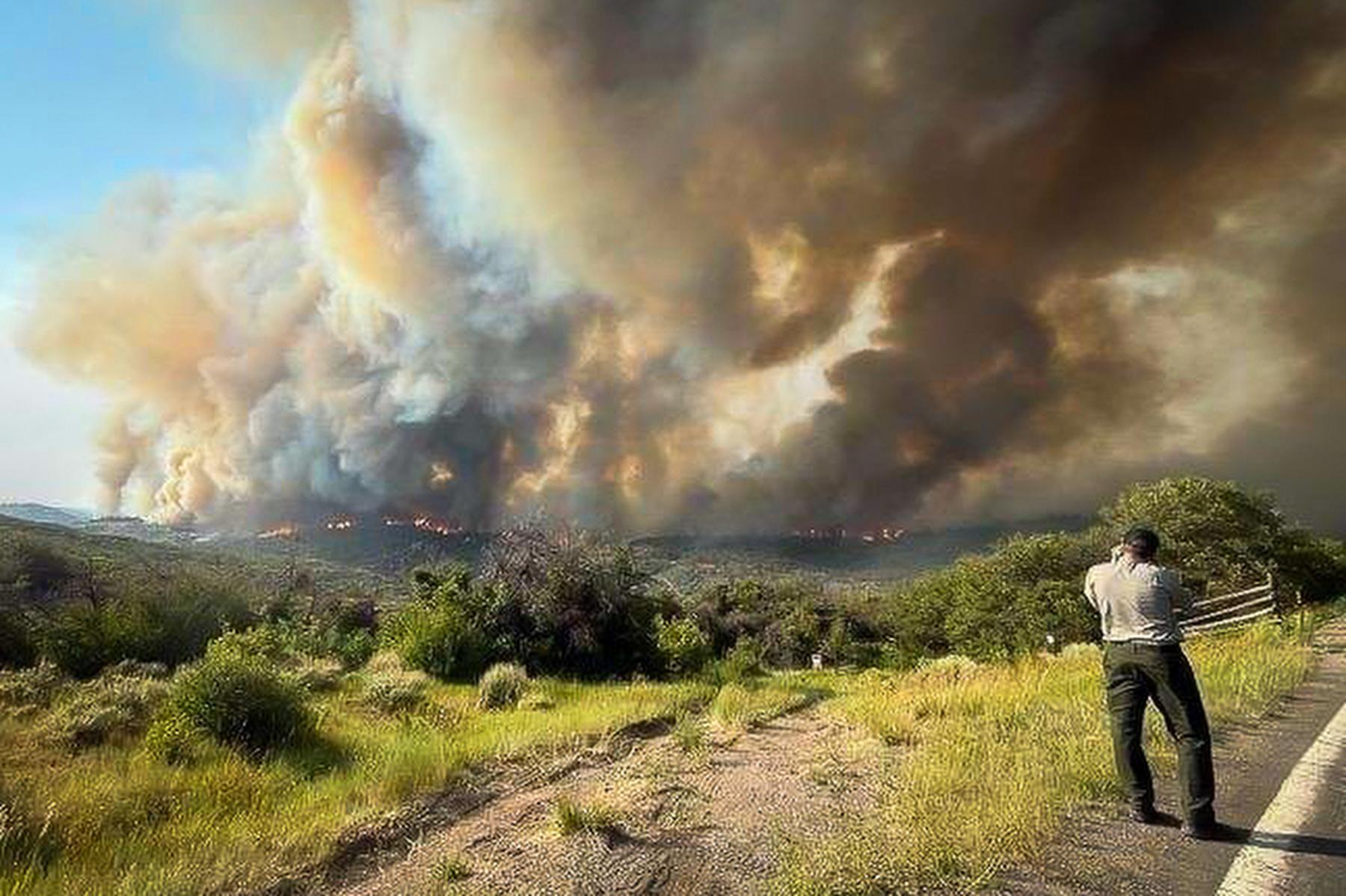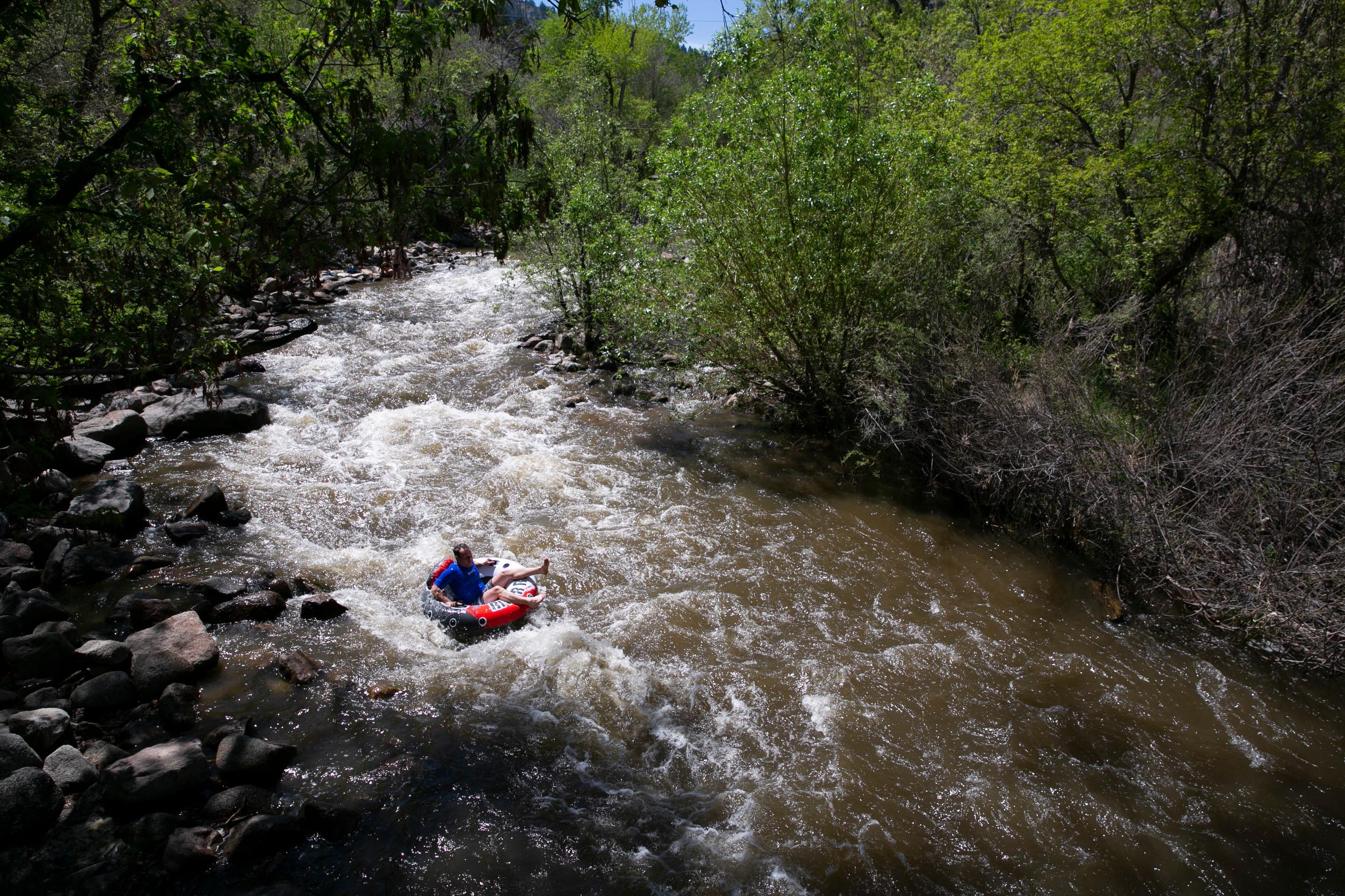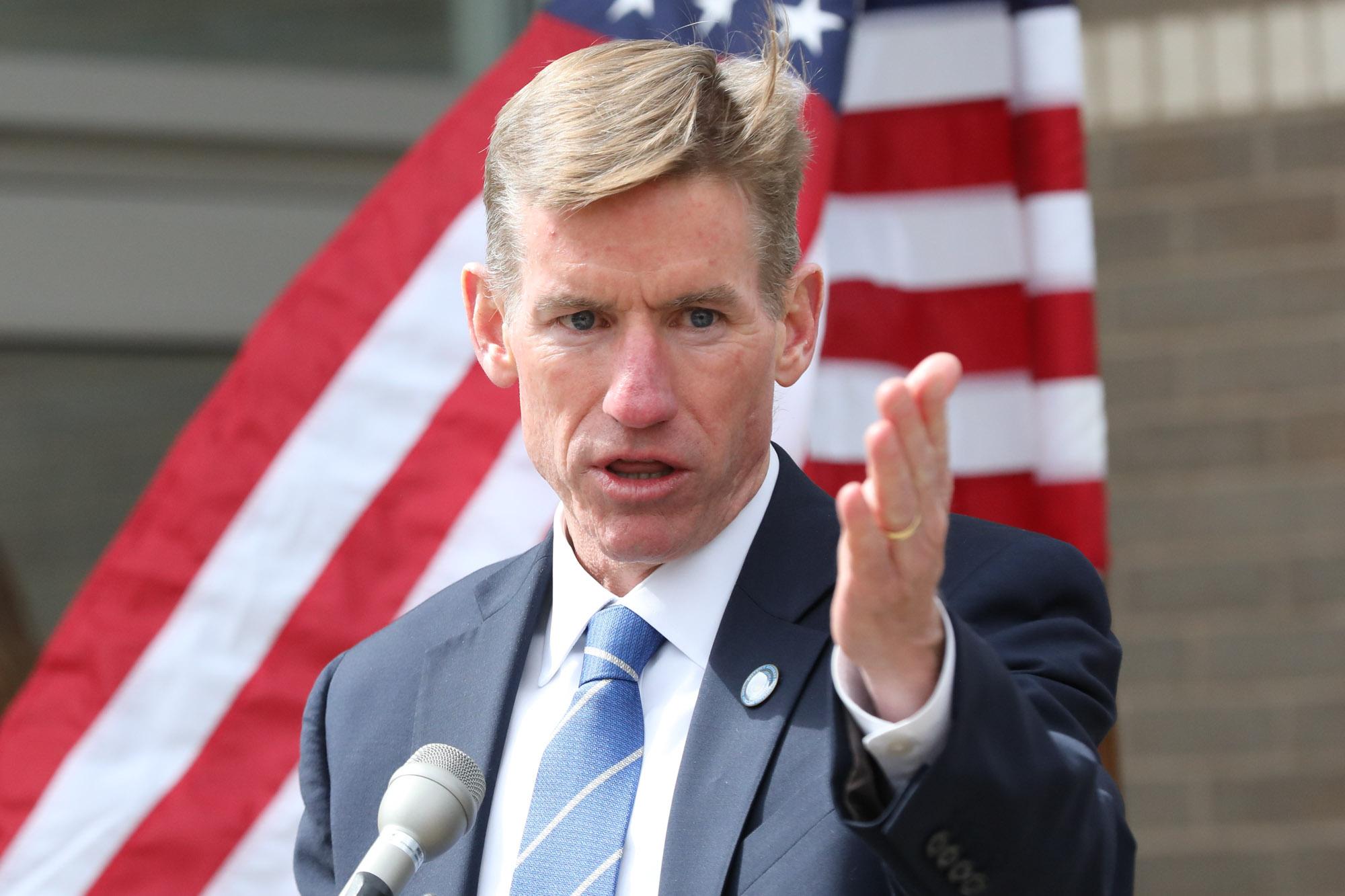
KRCC News sent detailed surveys about some of the most critical issues facing city leaders to the candidates running for Colorado Springs City Council. Here's how District 5 candidate Cass R. Melin responded, in his own words.
What is your elevator pitch for why you are running, and why someone should vote for you?
I fell in love with Colorado Springs and have built a family here. I am married to a native of Colorado Springs and have five children. We are constantly out in the community. Whether it is to participate in our kids’ activities, various community events, or doing our own community service, we enjoy being involved in our community.
Over the last 13 years, I have seen our city explode into something almost unrecognizable. I am running for this office because I believe it is possible to allow Colorado Springs to grow responsibly, without losing what we love most about it - the small-town feel. As a former Federal Contract Specialist, I have first hand experience of the need for transparency, accountability, and better fiscal responsibility. I hope to use my experience and love for this city to enact policies that will help Colorado Springs remain a top place to raise a family and somewhere I am proud to call home.
Development & Growth
Should growth happen by expanding the city’s boundaries through annexation or by focusing on infill? And why do you think this is appropriate for the city’s future?
The short answer is both. There are definitely areas in the city, like the Platte Corridor, parts of Nevada, the outskirts of downtown, etc., that are under developed and under utilized that would benefit the area and city as a whole, for infill. However, I believe part of Colorado Springs’ charm is our lack of high rises and dense building. Therefore, there should be mix-use requirements as well as height restrictions and a community-driven form-code on infill building as well as land annexations, which should follow similar regulations, ensuring needs are met without compromising the skyline and the small city feel Colorado Springs residents have always known and loved.
When looking at annexations, I don't believe all are good or bad, but that each should be looked at and compared to a rubric of requirements including the 128% water surplus requirement, energy usage, emergency services, evacuation routes, ROI, etc. before making a decision.
Colorado Springs city council members also serve as the board of the city's utility company. Considering the impact of growth and development–think Arrowswest, Karman Line– do you believe both the utility board and council can effectively act impartially when it comes to decision making?
I do. City Council's job is to be the voice of the people they represent, while making decisions that are best for the city. They make decisions on land use and the most responsible way to do that is to understand CSU.
The city has been growing with new restaurants and high-end apartment complexes springing up downtown. Yet, some initiatives have faced widespread opposition. How would you work to balance PlanCOS’ “Vibrant Neighborhoods” with the small-city feel that many residents think makes Colorado Springs a wonderful place to live?
I am not an expert on the PlanCOS details, however, after a quick read through, I believe it would be easy to balance their plan with keeping a small-town feel that we all have grown to know and love. I believe it starts with community outreach to gather input to create the form-based codes for each community/neighborhood that a project is proposed in.
Once that form-code is created, it would be easy to avoid excessive apartment building and becoming over-built by adhering to those codes and encouraging creative commercial and housing solutions such as live-work housing, patio homes, and courtyard style developments.
Public Health & Safety
Is the city doing enough to address homelessness? What approach would you take?
While Colorado Springs has been doing a good job at reducing homelessness for individuals, according to HUD, homeless families have gone up 12% in Colorado. Homelessness is a problem for everyone involved. It can be a nuisance for businesses, residents, parkgoers, and, of course, the homeless themselves. Most homeless people do not choose to be homeless and would not be so with few interventions. A policy that would help with this issue is a multifaceted approach that includes training the entirety of the police force to handle the homeless population, including mental health and trauma training, creating mandatory connections to services for homeless individuals and families, shifting enforcement focus to reducing ticketing and focusing on housing-first initiatives.
In addition to this, other cities have been successful in reducing repeat homelessness, some even eliminating homelessness in their cities altogether, by utilizing safe camping spaces with co-located mental health care and work programs coupled with housing-first initiatives. Studies show that this approach is more cost-effective to the taxpayers than our current approach, which focuses on ticketing and incarceration. These sites have also been shown to reduce crime in the areas where they have been implemented and have the added benefit of supplying the city with more contributing members to the economy.
What is the most pressing public safety issue facing the city and how would you address it?
Public safety's most pressing issue would be the response times from police. This could be addressed in a few ways. First, there is a shortage of police by 0.5 officers per 1,000 residents, which is approximately 250 officers short of the standard 2 officers per 1,000 residents most of Colorado is using. To remedy this situation, investing in the recruitment and retention of our police force is imperative. Updating the training facility and training programs to include crisis training and Homeless Outreach Team (H.O.T.) training for the entire police force. This would have many positive benefits.
One, it would allow more options for police discretion when dealing with mental illness and homelessness rather than tickets and arrests, perpetuating the cycle of incarceration. This, in turn, would also improve public perception of our police force and foster further support from the community. This positive perception would lead to higher recruitment.
Next, retention would improve by including body cameras on all of our police officers. Studies have shown that both police officers and citizens act more civil when they know they are being recorded, which increases the safety of both citizens and police officers. The technology has come so far that it is no longer financially out of reach, and the automatic activation triggers, things like dispatching, unholstering a weapon, or turning on sirens, mitigate any privacy concerns and camera abuse. Increasing the safety of our officers and civilians through this technology would lead to greater retention, as they wouldn't be concerned about wrongful accusations.
Finally, by maintaining a consistent dialogue with our police force about their needs, we can act quickly to support them in keeping us all safe.
In light of the Waldo Canyon fire and other major fires in Colorado and throughout the West, is the city proactive enough in the face of development to ensure the safety of its residents and their properties? Is there anything you would change?
From my research, it seems like the state has taken steps to increase building codes to include more fire resistant materials and additional mitigation for building in high risk areas. Colorado Springs should look to adopting some of these regulations that make sense. I would also like to see an updated evacuation plan that would be more easily accessed and spread in educational advertisements for each region.
Governance
The city council just approved the use of some e-bikes in the city but are still figuring out policy around it. Should all types of e-bikes be allowed on all of the city’s trails, open spaces and parks? And should it be up to the voters or city council to decide?
I do not think all e-bikes should be allowed on all trails, such as throttle control on park trails. However, I do agree with the pedal assist, because it is a more inclusive way to allow people of differing abilities to be on the trails. In most cases, I think it makes most sense for voters to decide, as it is City Council's job to be the voice of the people.
How do you assure all of your constituents that you're listening to them, even if you vote contrary to what they express?
The thing is, you'll never be able to make 100% of constituents happy. However, if you are able to gather a good consensus from the people and understand their values, you can make a decision based on the community's values rather than a black or white answer. Even if you vote contrary to the polls, but in line with their values, I think that would show you are listening to them. It takes a lot of communication, but with communication comes the understanding and brings us all on the same page. The most important thing to remember is that your role is to represent the people, not decide for them.
If the people vote in favor of a citizen-led initiative, how do you navigate carrying out their wishes even if you disagree with the measure?
Absolutely and with consistency. It is more difficult and takes more organization and more collective consciousness to bring forth a citizen-led initiative and then have it passed, than it is to have a City Council member bring an initiative forward. Thus, it is absolutely imperative that you reflect the desires of the community over your own personal ideology.








